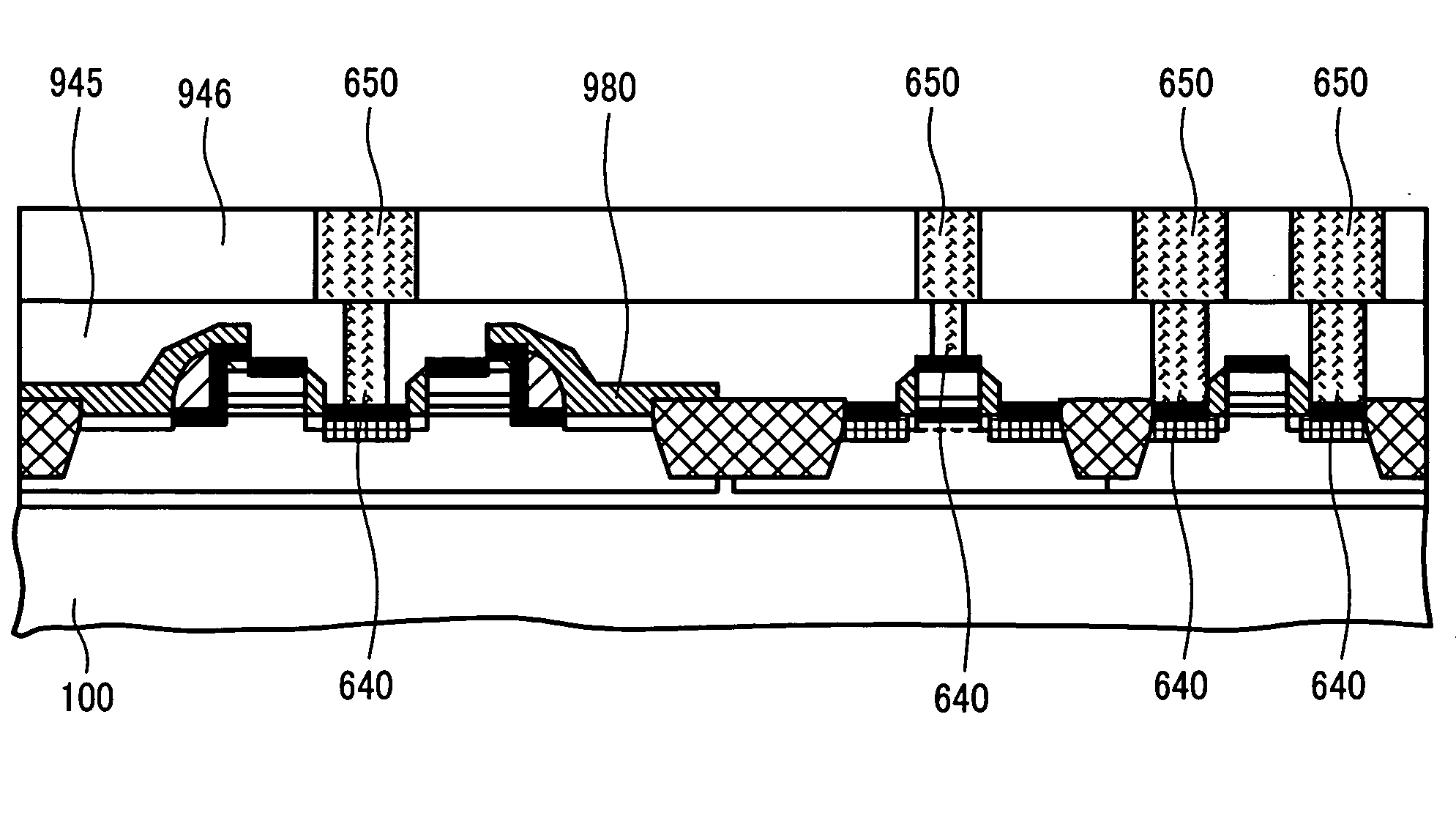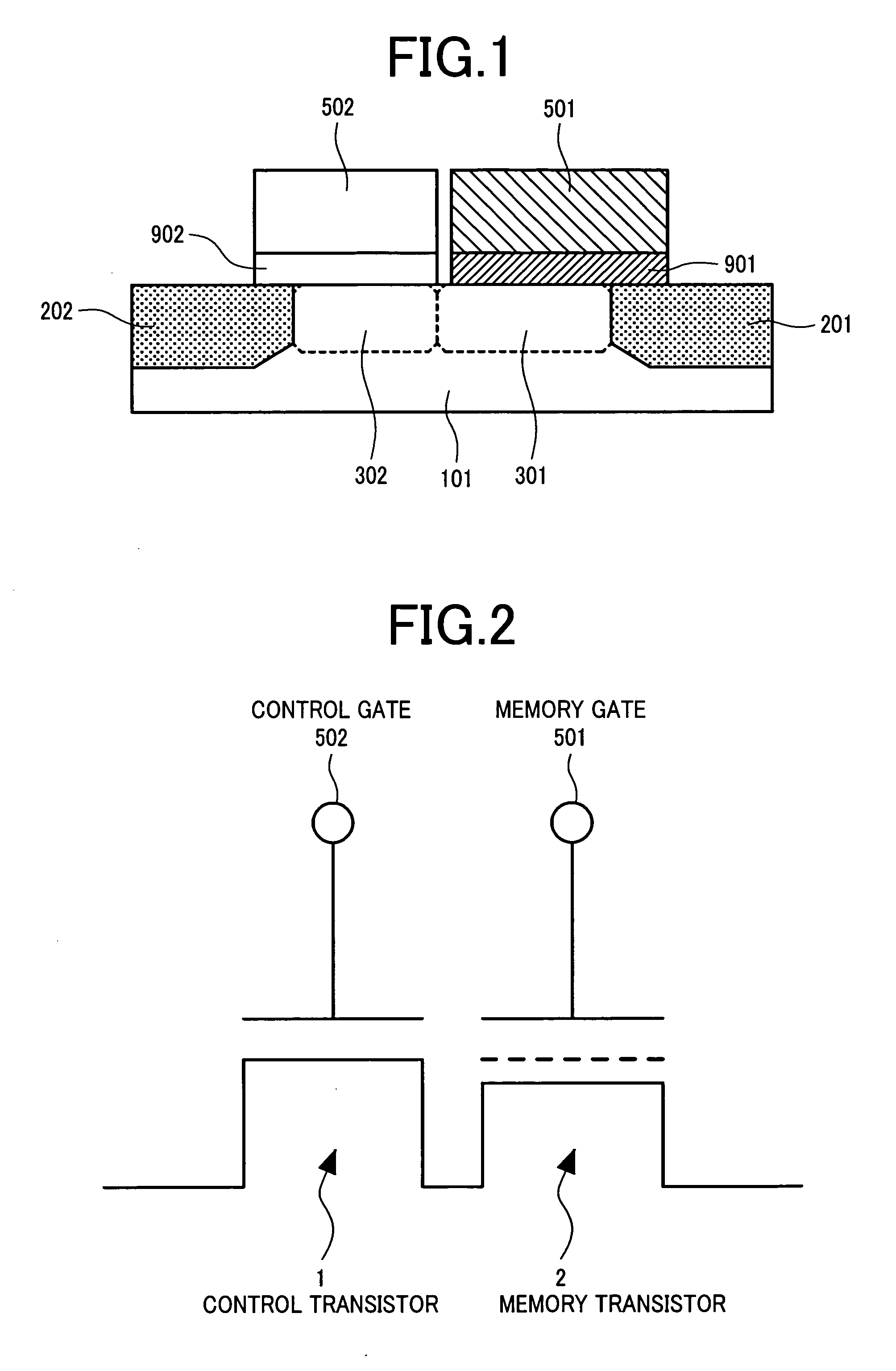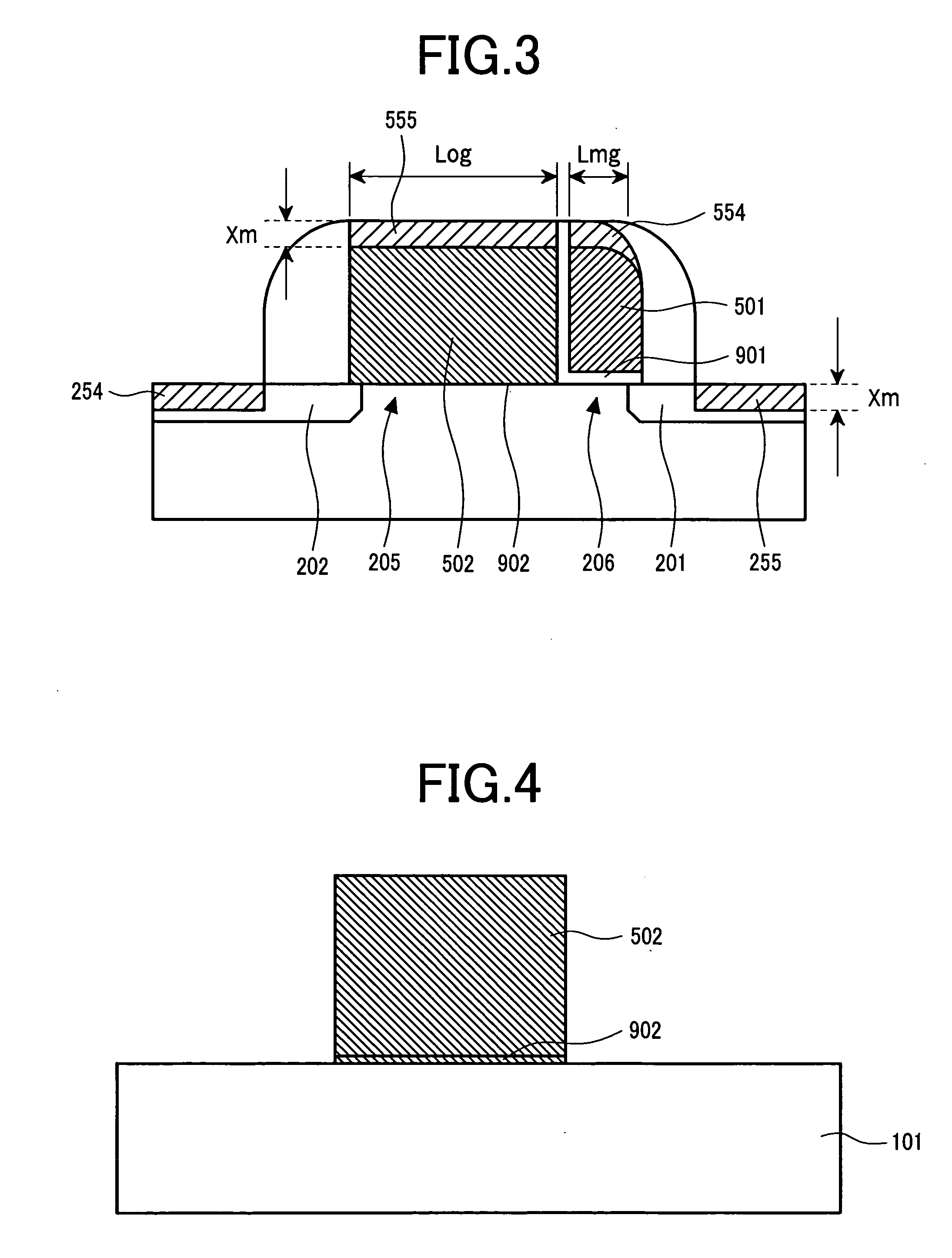Nonvolatile semiconductor memory and making method thereof
a semiconductor memory and non-volatile technology, applied in the direction of semiconductor devices, electrical equipment, transistors, etc., can solve the problems of increased wiring resistance of the memory gate electrode, unfavorable wiring resistance, and difficult realization
- Summary
- Abstract
- Description
- Claims
- Application Information
AI Technical Summary
Benefits of technology
Problems solved by technology
Method used
Image
Examples
embodiment 1
[0071] The present invention is to be described specifically with reference to embodiments thereof. At first, the method of formation and the structure according to the invention are to be described focusing on a memory gate as a principal portion thereof.
[0072] FIGS. 4 to 10 are schematic cross-sectional views of a semiconductor device according to a first embodiment of the invention.
[0073] In accordance with a usual manufacturing method of a semiconductor device, a semiconductor substrate having a well 101 is provided. After formation of a gate oxide film 902 of 3 nm thick in the surface of an active region in the well 101, phosphorus-doped polycrystal silicon is deposited to a thickness of 200 nm by a CVD method. Then, the polycrystal silicon layer is fabricated into a desired shape by using usual lithography to form a selection gate 502 (FIG. 4).
[0074] Then, after formation of a stacked structure 901 of a silicon oxide film, a silicon nitride film and a silicon oxide film as ...
embodiment 2
[0085] This embodiment illustrates a manufacturing step for a semiconductor integrated circuit including a memory cell portion and a memory peripheral circuit portion. FIGS. 12 to 23 are schematic cross-sectional views showing a semiconductor device of this embodiment in the order of steps. This embodiment shows the state of forming the memory cell portion and the memory peripheral circuit portion, particularly, a high voltage withstanding device portion and a usual device portion since high voltage withstanding is necessary, for example, in writing.
[0086] In FIG. 12, each of the regions for the memory cell portion (1) and the memory peripheral circuit portion, a high voltage withstanding memory portion (2) requiring a high voltage, particularly, in writing and a usual device portion (3) are depicted each by the reference described above. FIGS. 13 and 14 lack the indications for the regions but the corresponding regions are the same as those in FIG. 12. Further, FIG. 15 depicts mor...
PUM
 Login to View More
Login to View More Abstract
Description
Claims
Application Information
 Login to View More
Login to View More - R&D
- Intellectual Property
- Life Sciences
- Materials
- Tech Scout
- Unparalleled Data Quality
- Higher Quality Content
- 60% Fewer Hallucinations
Browse by: Latest US Patents, China's latest patents, Technical Efficacy Thesaurus, Application Domain, Technology Topic, Popular Technical Reports.
© 2025 PatSnap. All rights reserved.Legal|Privacy policy|Modern Slavery Act Transparency Statement|Sitemap|About US| Contact US: help@patsnap.com



